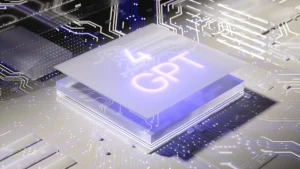
In today’s digital age, first and foremost, vast amounts of images and visual data are generated daily. Moreover, image recognition, powered by machine learning, allows computers to interpret and understand these visuals, revolutionizing fields such as healthcare, e-commerce, and autonomous vehicles. Additionally, this article delves into the essential concepts of image recognition with machine learning and explores its diverse applications.
The Essence of Image Recognition
At its core, image recognition leverages machine learning algorithms to enable computers to recognize and interpret images. This process is akin to how humans perceive and understand visual information. It involves two primary phases:
Image Acquisition
Before recognition can occur, images must be acquired. This step involves capturing, scanning, or uploading an image to a digital platform.
Image Processing
Machine learning algorithms process the acquired image data, identifying patterns, features, and distinct characteristics.
The Fundamentals of Image Recognition
- Uncover the crucial components of image recognition.
- Understand the role of artificial neural networks.
- Explore the power of convolutional neural networks (CNNs).
- Delve into the magic of deep learning.
Artificial Neural Networks
At the heart of image recognition are artificial neural networks (ANNs). Firstly, ANNs are inspired by the human brain’s neural structure, mimicking its complex network. These ANNs consist of layers of interconnected artificial neurons. Furthermore, each layer processes information in a hierarchical manner, with data being passed through successive layers for analysis and abstraction. This hierarchical structure makes ANNs well-suited for tasks like image recognition, where features are detected at different levels of complexity. This allows the system to identify patterns and objects within images, gradually building a deeper understanding.
Convolutional Neural Networks (CNNs)
CNNs are a specialized type of neural network designed for image processing tasks. They use convolutional layers to automatically and adaptively learn spatial hierarchies of features from input data. This enables them to understand complex images and patterns effectively. Additionally, machine learning images algorithms can automatically classify and tag images, streamlining content management systems.
The Magic of Deep Learning
Deep learning, a subset of machine learning, plays a pivotal role in image recognition. It involves the use of neural networks with multiple layers (deep neural networks). The depth of these networks allows them to comprehend intricate features in images. Machine learning images has revolutionized the analysis of medical images, enabling more accurate diagnoses.
Steps to Create Image Recognition Model
Image recognition via machine learning involves several steps. Here’s a simplified overview of the process:
Data Collection: Gather a dataset of images relevant to your recognition task. This dataset should contain labeled images, meaning each image is associated with the category or object it represents.
Data Preprocessing: Prepare the data by resizing images to a consistent format, normalizing pixel values, and augmenting the dataset if necessary (e.g., by applying random rotations or flips to increase diversity).
Model Selection: Choose a suitable machine learning model for image recognition. Convolutional Neural Networks (CNNs) are commonly used for this task due to their ability to learn spatial hierarchies of features.
Model Training: Train the selected model on your dataset. During training, the model learns to recognize patterns and features that distinguish different objects or categories.
Validation and Testing: Split your dataset into training, validation, and test sets. Use the validation set to fine-tune the model and prevent overfitting. The test set is used to evaluate the model’s performance.
Evaluation: Assess the model’s performance using evaluation metrics like accuracy, precision, recall, and F1 score, depending on the specific requirements of your task.
Deployment: Once your model performs well on the test set, you can deploy it for real-world use. This can involve integrating the model into an application or system.
Continuous Improvement: Machine learning models may need periodic updates as new data becomes available or as the recognition task evolves.
Image Recognition in Python
Here are some popular libraries and frameworks for image recognition in Python:
TensorFlow: An open-source machine learning framework developed by Google.
PyTorch: A deep learning framework popular for research and development.
Keras: A high-level neural networks API that runs on top of TensorFlow or other backend engines.
OpenCV: An open-source computer vision library that can be used for image preprocessing and feature extraction.
Remember that the success of image recognition often depends on the size and quality of your dataset, the choice of the model architecture, and the amount of computational resources available for training. Furthermore, it may be beneficial to start with pre-trained models and fine-tune them for your specific task if you have limited data or resources.
Certainly, collecting data for image recognition typically involves downloading or capturing images from various sources. For instance, here’s an example Python code snippet that demonstrates how to download images using the requests library and save them to your local machine:
Sample pythonCopy Code
import requests
import os
# Define a function to download images
def download_image(url, save_path):
try: response = requests.get(url, stream=True) response.raise_for_status() with open(save_path, ‘wb’) as file:
for chunk in response.iter_content(chunk_size=8192): file.write(chunk)
print(f”Downloaded: {save_path}”) except Exception as e: print(f”Failed to download: {url}”) print(str(e)
# List of image URLs to download
image_urls = [ ‘https://example.com/image1.jpg’, ‘https://example.com/image2.jpg’,
# Add more URLs as needed ]
# Directory to save downloaded
images save_directory = ‘image_data’
# Create the save directory if it doesn’t exist os.makedirs(save_directory, exist_ok=True)
# Download and save images
for i, url in enumerate(image_urls): image_filename = os.path.join(save_directory, f’image_{i+1}.jpg’) download_image(url, image_filename)
This code defines a download_image function to download images from URLs and save them to a specified directory. Replace ‘https://example.com/image1.jpg’ and ‘https://example.com/image2.jpg’ with the URLs of the images you want to collect. You can add more URLs to the image_urls list as needed.
Make sure to have the requests library installed in your Python environment.
You can install it using pip:
bashCopy code
pip install requests
This code will create a directory named ‘image_data’ (or any directory you specify in save_directory) and save the downloaded images in that folder. Adjust the code and file paths according to your specific requirements and data sources.
Applications of Image Recognition
The applications of image recognition with machine learning are far-reaching and diverse. Here are some prominent areas where this technology is making a substantial impact:
- Healthcare: Image recognition aids in medical diagnosis, enabling the early detection of diseases from medical images like X-rays and MRIs.
- Retail and E-commerce: It enhances the shopping experience by enabling visual search, recommendation systems, and inventory management.
- Automotive Industry: In autonomous vehicles, image recognition is vital for identifying road signs, pedestrians, and potential hazards.
- Agriculture: It is used for crop monitoring, pest detection, and yield estimation.
- Security: Image recognition is employed for facial recognition, license plate recognition, and surveillance systems.
- Content Moderation: Social media platforms and online communities use it to identify and filter inappropriate content.
FAQs (Frequently Asked Questions)
Image recognition with machine learning is more advanced and adaptable compared to traditional image processing. It can automatically learn and adapt to new patterns and features without manual programming.
Training data is crucial for machine learning models to learn patterns. The more diverse and extensive the training data, the better the model’s performance.
Yes, image recognition can be harnessed for artistic purposes. Artists and designers are exploring its potential in generating and transforming visual content.
Ethical concerns primarily revolve around issues related to privacy and bias in algorithms. Addressing these concerns is essential in the responsible use of image recognition technology.
Conclusion
In a world awash with images, first and foremost, the fundamentals of image recognition with machine learning are pivotal. For example, understanding the core principles, applications, and potential ethical considerations is the key to harnessing the power of this transformative technology. As a result, image recognition continues to evolve, consequently, its influence on industries and our daily lives will only grow.
Machine learning image generation is a fascinating field where algorithms create images that often seem like they were crafted by human hands. These AI models use vast datasets to learn patterns, colors, and styles, then generate entirely new visuals. Whether it’s generating lifelike faces, designing unique artwork, or creating realistic scenes, machine learning image generation opens up exciting possibilities for various applications. From art and entertainment to medical imaging and design, the impact of this technology is far-reaching and continually evolving.
To elaborate, unlock the future with image recognition, and explore the boundless possibilities it offers. Also check our article on machine learning “Unveiling the Cutting-Edge Frontiers of New AI Technology“.







